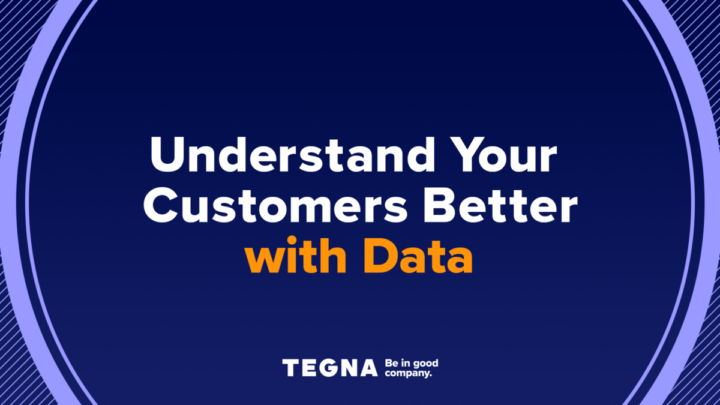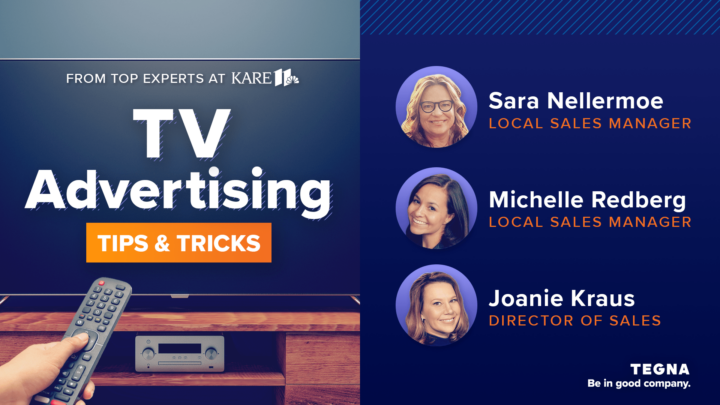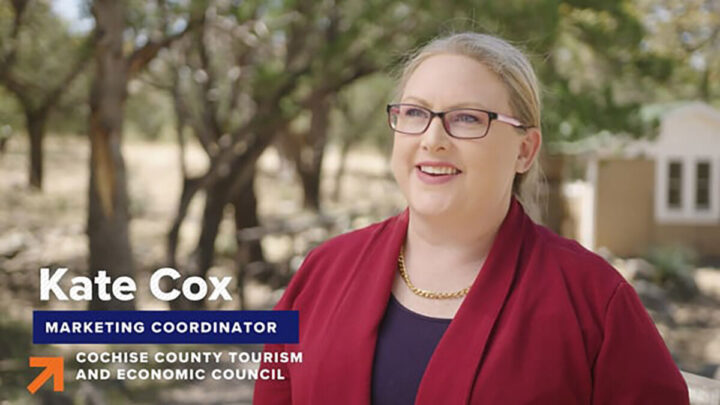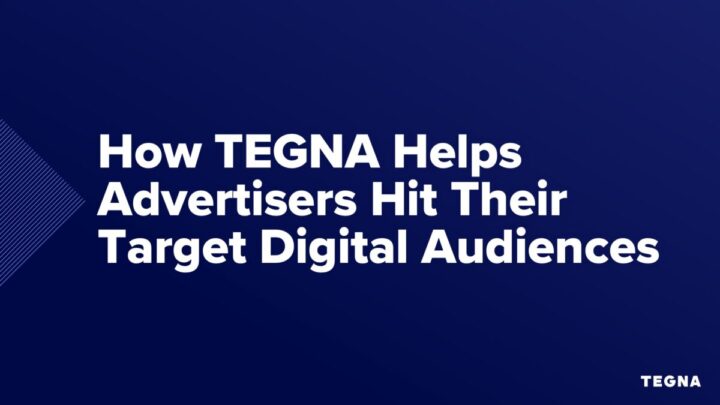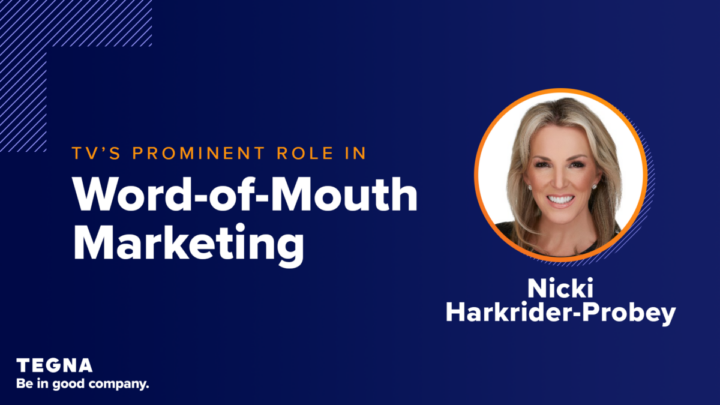Eye Care Advertising Strategies for Optometrists
Any optometrist knows the importance of having good vision … and being visible in the local community. After all, you can’t provide the best care for vision problems, eye injuries, and ocular diseases if nobody knows about your practice. That’s where marketing and advertising come into play, but that world can sometimes be a bit fuzzy to look at. How do I bring in new patients? Where do I advertise? What should the message be? What do these patients need the most?
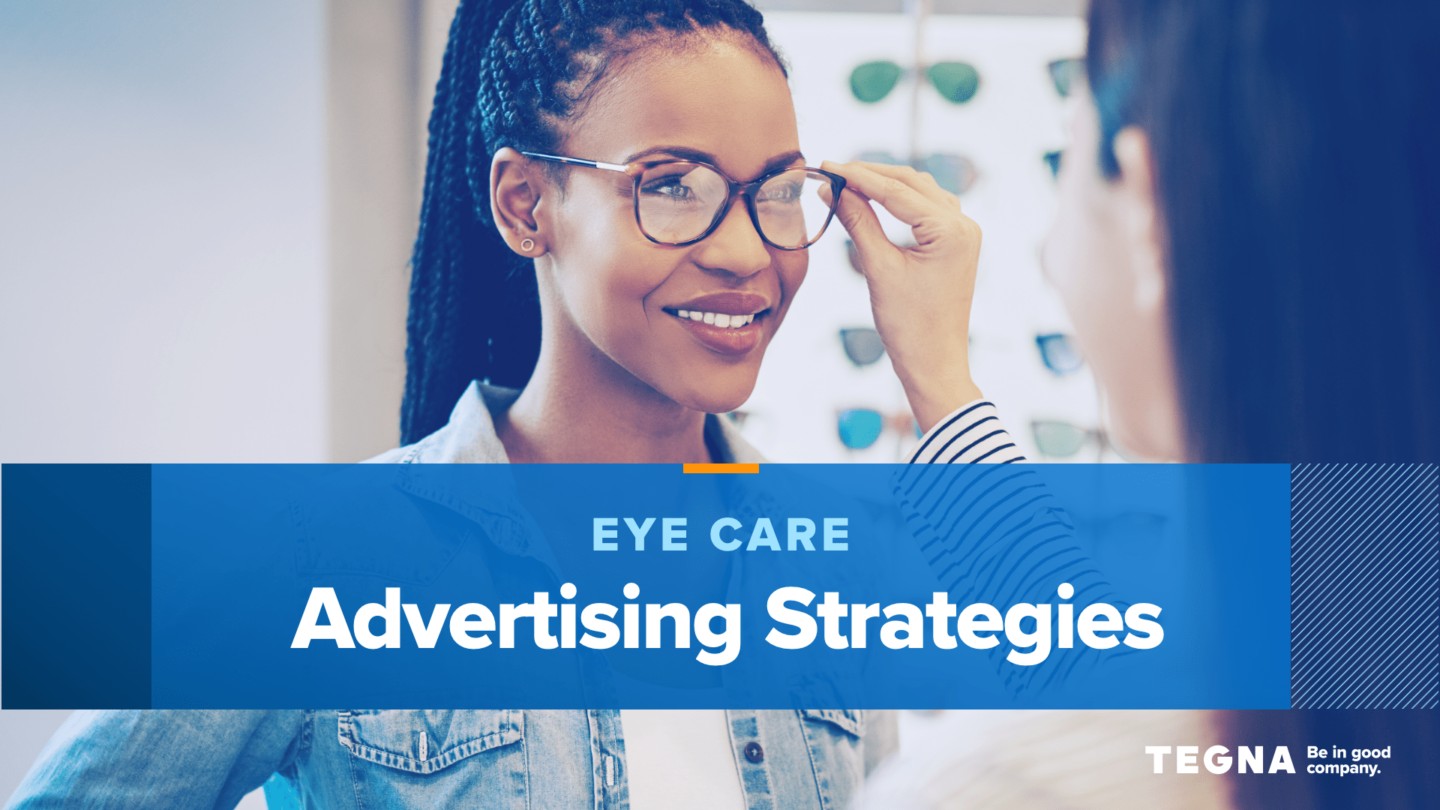
Looking through the rights lens is critical, and Team TEGNA is here to help you get answers to these questions, grow brand visibility, and increase in-person visits. Here is our complete guide to help optometrists advertise their eye care brand.
An Overview of Optometry Advertising
TEGNA’s new e-book, Checking the Pulse of the Healthcare Consumer, found that patients who postponed medical care due to the pandemic are eager to address their healthcare needs, spending significant time and money in the pursuit of wellness – and this includes addressing eye care. In fact, we’re expecting a 13% increase in dental and vision care visits in 2023.
That means now is the time to ramp up marketing and advertising campaigns to attract new patients and position your business as the vital choice in quality care.
Best Advertising Channels for Optometrists
Choosing the right advertising channel for your practice will depend on different factors. Who is your target audience, and what are their media preferences? Creating persona profiles and digging into the mindset of your target audience from insights gathered in Checking the Pulse of the Healthcare Consumer will also help determine the best way to generate new business and bring in new patients.
However, as a national media company with 64 stations in 51 markets, we’ve seen some channels perform better than others. They are:
Local Television & News
While any good optometrist knows watching too much TV can cause eye strain and dry eyes, it’s also the top medium for influencing a consumer’s purchasing decisions. It’s also a very affordable and economical option for optometrists. With the right creative message, broadcast TV campaigns will pay for themselves and then some, thanks to TV’s wide reach and local relevance. In fact, local TV news is a critical source of health information and arbiter of trust for patients – it’s where most consumers (55%) learn about the latest health information.
Streaming
The way people view content – and the devices they consume it on – is rapidly changing. With “the new living room, lean-back experience,” flexibility is key, as consumers want to watch quality programming and content at any time, anywhere, on any device, immediately, and with ease. Streaming also offers an extra layer of targeting and scale to capture audiences that can’t be reached through linear alone. You can narrow your target audiences based on DMA or geography, from regions and states all the way down to ZIP codes, consumer trends such as interests, intenders, in-market shoppers, and more.
Digital
Have you heard of the second-screen phenomena? It happens when TV and streaming viewers use their phones as a second screen to look up what they see on the bigger screen. For example, if a viewer sees a TV ad with a QR code, they’ll pull out their phone to scan the code and learn more about that featured product or service. Therefore, having a strong digital strategy with pre-roll, banner ads, retargeting, and native advertising will act as a perfect complement to TV and streaming campaigns to extend reach, create brand awareness, increase website traffic, and generate more leads.
KPIs for Eye Care Campaigns
Measures of successful ad campaigns are unique, just as your practice is unique in itself. However, a few universal metrics are used across industries to measure the effectiveness of a TV and streaming ad campaign. Ten popular Key Performance Indicators (KPIs) for broadcast, streaming, and digital campaigns include:
- Reach: The number of viewers in a target audience exposed to an ad.
- Frequency: The number of times a viewer in a target audience has seen an ad.
- Impressions: The number of times a target audience views an ad or the overall exposure to the ad.
- Website Visits: The number of visitors to a brand website from viewing an ad.
- Brand Lift: A measure of the impact on top-of-funnel metrics, such as brand awareness and consideration. Learn more about Brand Lift here.
- Conversions: When a website visitor performs the desired action of the ad. Conversions can include someone purchasing through your website, filling out a form, or downloading a brochure.
- Click-Through Rate (CTR): For streaming campaigns, this measures the number of ad viewers who click on an ad and visit the advertiser’s website.
- Video Completion Rate (VCR): Also measured in streaming campaigns, VCR is the percentage of ads viewed from beginning to end.
- Return on Investment (ROI): According to LinkedIn, a good ROI for TV advertising is around 300 to 500%. This can be calculated by ROI = campaign gain / overall campaign spend.
- Return on Ad Spend (ROAS): This metric breaks down ROI and measures the revenue earned from a specific campaign. To find ROAS, divide the income attributed to the ad campaign by the cost of that campaign.
5 Tips for Marketing Eye Care Services
Every healthcare provider will have unique challenges and goals regarding campaigns. Still, a few universal findings from Checking the Pulse of Today’s Healthcare Consumer can benefit your practice’s marketing and advertising messages. Here are our five best practice tips.
1. Create a Plan
One of the most critical components of your marketing campaign, an effective media plan will outline the who, what, when, where, why, and how your brand intends to reach its target audience. It will also include your campaign goals and objectives, budget and timeline, frequency and reach, target audiences, and ideal advertising channels and platforms. By researching and mapping out these variables, your cohesive plan can help campaigns reach the right audience at the right time, improve the frequency and reach, and maximize your ROI.
2. Know What Patients Want
Patient education is critical to why healthcare brands advertise and the information consumers seek. Additionally, Checking the Pulse of Today’s Healthcare Consumer uncovered a lot of pain points in the healthcare field that smart campaigns will tackle head-on. Consider crafting messaging that addresses the following:
- Consumers find the healthcare space is understaffed, creating an experience where patients have long wait times and feel rushed when receiving care.
- When purchasing eyeglasses or contacts, consumers prefer to buy at their doctor’s office 2 to 1 over large chain retailers and 3 to 1 over online storefronts.
- Lower-income consumers are less likely to plan dental and vision appointments this year.
- Although the federal uninsured rate is at an all-time low of 8%, 41% of consumers delay medical appointments due to insufficient coverage. As a result, consumers believe that cost transparency and lower medical costs can improve the patient experience.
3. Utilize Storytelling
When audiences become captivated and emotionally connected to an ad, it improves brand awareness and ad recall and increases purchase intent. Before the pandemic, creative that performed well told a patient’s story. During the pandemic, the best-performing ads focused on health and wellness – things like how to keep yourself safe. In 2023, we’re seeing that viewers want to hear a caregiver’s perspective as much as they want to hear the patient’s.
4. Target Local
Local news channels are vital for communities to receive patient education, as 55% of consumers learn about the latest health information from their local news. Additionally, 60% of consumers who get health information from local news trust brands that advertise in its content. These stations have earned the trust of their viewers and can amplify a hospital’s message at scale.
For example, Methodist Healthcare in San Antonio partnered with KENS5 to help get the word out about the regional healthcare network’s community initiatives – and the campaign was a success. Click here to watch as Mike Malo, former VP of Marketing for Methodist Healthcare, tells us more about his relationship with TEGNA’s KENS5.
5. Measure Results
Practical TV ad measurement tools used to be what marketers dreamed of. Today, they are a reality. TEGNA Attribution, for example, collects real-time data to connect viewership to outcome metrics such as website visits and app downloads. This data can be used to prove the value of TV/streaming schedules to drive business results.
Let’s say the numbers show that your ad on Monday mornings isn’t generating any website traffic or bringing in any phone calls. However, that same ad generates much traffic on the evening news. You can then make the data-driven decision to adjust dayparts and programming to develop the best results and eliminate ad dollars that aren’t producing.
3 Eye Doctor Advertising Examples
Warby Parker’s Buy a Pair, Give a Pair Showcases Purpose
Why it Works: Knowing what consumers care about – 94% of global consumers say it is important for companies and brands to have a strong purpose – Warby Parker’s Buy a Pair, Give a Pair Program was one of the biggest contributors to Warby Parker’s success. Since its inception, over 10 million glasses have been distributed through this program to people needing vision care.
Key Whitman Eye Center Teams with Local News for Patient Education
Why it Works: The Eye Center supplemented its effective 15-second commercials with appearances of TEGNA’s WFAA to help viewers learn more about the importance of a good diet for eye health. This positions them as experts in the field, and because they are appearing on a trusted channel, they benefit from the news-trust halo.
Empire Eye Physicians: Inland Life
Why it Works: This piece of sponsored content provides patient education, shows consistent branding for brand recall, and was targeted locally to bring in new patients seeking a new type of treatment.
Sound Good? Advertise Your Optometry Practice With TEGNA
By aligning with the unique content opportunities that TEGNA delivers proven results through simplified multi-platform advertising solutions that connect your business to the audiences that matter most via Broadcast TV, OTT Streaming Advertising, and Digital Solutions, including Targeted Display and Retargeting, as well as campaign measurement and optimization with TEGNA Attribution. TEGNA stations also offer a variety of customizable content sponsorships, as illustrated above. Let’s get in touch if you’re thinking of amplifying your eye care brand’s marketing efforts.
Frequently Asked Questions
How do I promote my eye clinic?
Promoting an eye clinic involves deeply understanding your target market and the channels they use. Optometrists should combine the power of digital and TV advertising to extend the reach of their campaigns. Having memorable creative across various touchpoints in your ad campaign is also important.
How do I grow my optometry business?
Creating ads is a great way to grow an optometry business. However, it’s also important to focus on the in-store customer experience. Generating new customers can cost five to 25 times more than retaining existing ones. Creating a strategy that focuses on customer acquisition and retention is vital to grow your optometry business.
Looking through the rights lens is critical, and Team TEGNA is here to help you get answers to these questions, grow brand visibility, and increase in-person visits. Here is our complete guide to help optometrists advertise their eye care brand.
An Overview of Optometry Advertising
TEGNA’s new e-book, Checking the Pulse of the Healthcare Consumer, found that patients who postponed medical care due to the pandemic are eager to address their healthcare needs, spending significant time and money in the pursuit of wellness – and this includes addressing eye care. In fact, we’re expecting a 13% increase in dental and vision care visits in 2023.
That means now is the time to ramp up marketing and advertising campaigns to attract new patients and position your business as the vital choice in quality care.
Best Advertising Channels for Optometrists
Choosing the right advertising channel for your practice will depend on different factors. Who is your target audience, and what are their media preferences? Creating persona profiles and digging into the mindset of your target audience from insights gathered in Checking the Pulse of the Healthcare Consumer will also help determine the best way to generate new business and bring in new patients.
However, as a national media company with 64 stations in 51 markets, we’ve seen some channels perform better than others. They are:
Local Television & News
While any good optometrist knows watching too much TV can cause eye strain and dry eyes, it’s also the top medium for influencing a consumer’s purchasing decisions. It’s also a very affordable and economical option for optometrists. With the right creative message, broadcast TV campaigns will pay for themselves and then some, thanks to TV’s wide reach and local relevance. In fact, local TV news is a critical source of health information and arbiter of trust for patients – it’s where most consumers (55%) learn about the latest health information.
Streaming
The way people view content – and the devices they consume it on – is rapidly changing. With “the new living room, lean-back experience,” flexibility is key, as consumers want to watch quality programming and content at any time, anywhere, on any device, immediately, and with ease. Streaming also offers an extra layer of targeting and scale to capture audiences that can’t be reached through linear alone. You can narrow your target audiences based on DMA or geography, from regions and states all the way down to ZIP codes, consumer trends such as interests, intenders, in-market shoppers, and more.
Digital
Have you heard of the second-screen phenomena? It happens when TV and streaming viewers use their phones as a second screen to look up what they see on the bigger screen. For example, if a viewer sees a TV ad with a QR code, they’ll pull out their phone to scan the code and learn more about that featured product or service. Therefore, having a strong digital strategy with pre-roll, banner ads, retargeting, and native advertising will act as a perfect complement to TV and streaming campaigns to extend reach, create brand awareness, increase website traffic, and generate more leads.
KPIs for Eye Care Campaigns
Measures of successful ad campaigns are unique, just as your practice is unique in itself. However, a few universal metrics are used across industries to measure the effectiveness of a TV and streaming ad campaign. Ten popular Key Performance Indicators (KPIs) for broadcast, streaming, and digital campaigns include:
- Reach: The number of viewers in a target audience exposed to an ad.
- Frequency: The number of times a viewer in a target audience has seen an ad.
- Impressions: The number of times a target audience views an ad or the overall exposure to the ad.
- Website Visits: The number of visitors to a brand website from viewing an ad.
- Brand Lift: A measure of the impact on top-of-funnel metrics, such as brand awareness and consideration. Learn more about Brand Lift here.
- Conversions: When a website visitor performs the desired action of the ad. Conversions can include someone purchasing through your website, filling out a form, or downloading a brochure.
- Click-Through Rate (CTR): For streaming campaigns, this measures the number of ad viewers who click on an ad and visit the advertiser’s website.
- Video Completion Rate (VCR): Also measured in streaming campaigns, VCR is the percentage of ads viewed from beginning to end.
- Return on Investment (ROI): According to LinkedIn, a good ROI for TV advertising is around 300 to 500%. This can be calculated by ROI = campaign gain / overall campaign spend.
- Return on Ad Spend (ROAS): This metric breaks down ROI and measures the revenue earned from a specific campaign. To find ROAS, divide the income attributed to the ad campaign by the cost of that campaign.
5 Tips for Marketing Eye Care Services
Every healthcare provider will have unique challenges and goals regarding campaigns. Still, a few universal findings from Checking the Pulse of Today’s Healthcare Consumer can benefit your practice’s marketing and advertising messages. Here are our five best practice tips.
1. Create a Plan
One of the most critical components of your marketing campaign, an effective media plan will outline the who, what, when, where, why, and how your brand intends to reach its target audience. It will also include your campaign goals and objectives, budget and timeline, frequency and reach, target audiences, and ideal advertising channels and platforms. By researching and mapping out these variables, your cohesive plan can help campaigns reach the right audience at the right time, improve the frequency and reach, and maximize your ROI.
2. Know What Patients Want
Patient education is critical to why healthcare brands advertise and the information consumers seek. Additionally, Checking the Pulse of Today’s Healthcare Consumer uncovered a lot of pain points in the healthcare field that smart campaigns will tackle head-on. Consider crafting messaging that addresses the following:
- Consumers find the healthcare space is understaffed, creating an experience where patients have long wait times and feel rushed when receiving care.
- When purchasing eyeglasses or contacts, consumers prefer to buy at their doctor’s office 2 to 1 over large chain retailers and 3 to 1 over online storefronts.
- Lower-income consumers are less likely to plan dental and vision appointments this year.
- Although the federal uninsured rate is at an all-time low of 8%, 41% of consumers delay medical appointments due to insufficient coverage. As a result, consumers believe that cost transparency and lower medical costs can improve the patient experience.
3. Utilize Storytelling
When audiences become captivated and emotionally connected to an ad, it improves brand awareness and ad recall and increases purchase intent. Before the pandemic, creative that performed well told a patient’s story. During the pandemic, the best-performing ads focused on health and wellness – things like how to keep yourself safe. In 2023, we’re seeing that viewers want to hear a caregiver’s perspective as much as they want to hear the patient’s.
4. Target Local
Local news channels are vital for communities to receive patient education, as 55% of consumers learn about the latest health information from their local news. Additionally, 60% of consumers who get health information from local news trust brands that advertise in its content. These stations have earned the trust of their viewers and can amplify a hospital’s message at scale.
For example, Methodist Healthcare in San Antonio partnered with KENS5 to help get the word out about the regional healthcare network’s community initiatives – and the campaign was a success. Click here to watch as Mike Malo, former VP of Marketing for Methodist Healthcare, tells us more about his relationship with TEGNA’s KENS5.
5. Measure Results
Practical TV ad measurement tools used to be what marketers dreamed of. Today, they are a reality. TEGNA Attribution, for example, collects real-time data to connect viewership to outcome metrics such as website visits and app downloads. This data can be used to prove the value of TV/streaming schedules to drive business results.
Let’s say the numbers show that your ad on Monday mornings isn’t generating any website traffic or bringing in any phone calls. However, that same ad generates much traffic on the evening news. You can then make the data-driven decision to adjust dayparts and programming to develop the best results and eliminate ad dollars that aren’t producing.
3 Eye Doctor Advertising Examples
Warby Parker’s Buy a Pair, Give a Pair Showcases Purpose
Why it Works: Knowing what consumers care about – 94% of global consumers say it is important for companies and brands to have a strong purpose – Warby Parker’s Buy a Pair, Give a Pair Program was one of the biggest contributors to Warby Parker’s success. Since its inception, over 10 million glasses have been distributed through this program to people needing vision care.
Key Whitman Eye Center Teams with Local News for Patient Education
Why it Works: The Eye Center supplemented its effective 15-second commercials with appearances of TEGNA’s WFAA to help viewers learn more about the importance of a good diet for eye health. This positions them as experts in the field, and because they are appearing on a trusted channel, they benefit from the news-trust halo.
Empire Eye Physicians: Inland Life
Why it Works: This piece of sponsored content provides patient education, shows consistent branding for brand recall, and was targeted locally to bring in new patients seeking a new type of treatment.
Sound Good? Advertise Your Optometry Practice With TEGNA
By aligning with the unique content opportunities that TEGNA delivers proven results through simplified multi-platform advertising solutions that connect your business to the audiences that matter most via Broadcast TV, OTT Streaming Advertising, and Digital Solutions, including Targeted Display and Retargeting, as well as campaign measurement and optimization with TEGNA Attribution. TEGNA stations also offer a variety of customizable content sponsorships, as illustrated above. Let’s get in touch if you’re thinking of amplifying your eye care brand’s marketing efforts.
Frequently Asked Questions
How do I promote my eye clinic?
Promoting an eye clinic involves deeply understanding your target market and the channels they use. Optometrists should combine the power of digital and TV advertising to extend the reach of their campaigns. Having memorable creative across various touchpoints in your ad campaign is also important.
How do I grow my optometry business?
Creating ads is a great way to grow an optometry business. However, it’s also important to focus on the in-store customer experience. Generating new customers can cost five to 25 times more than retaining existing ones. Creating a strategy that focuses on customer acquisition and retention is vital to grow your optometry business.








